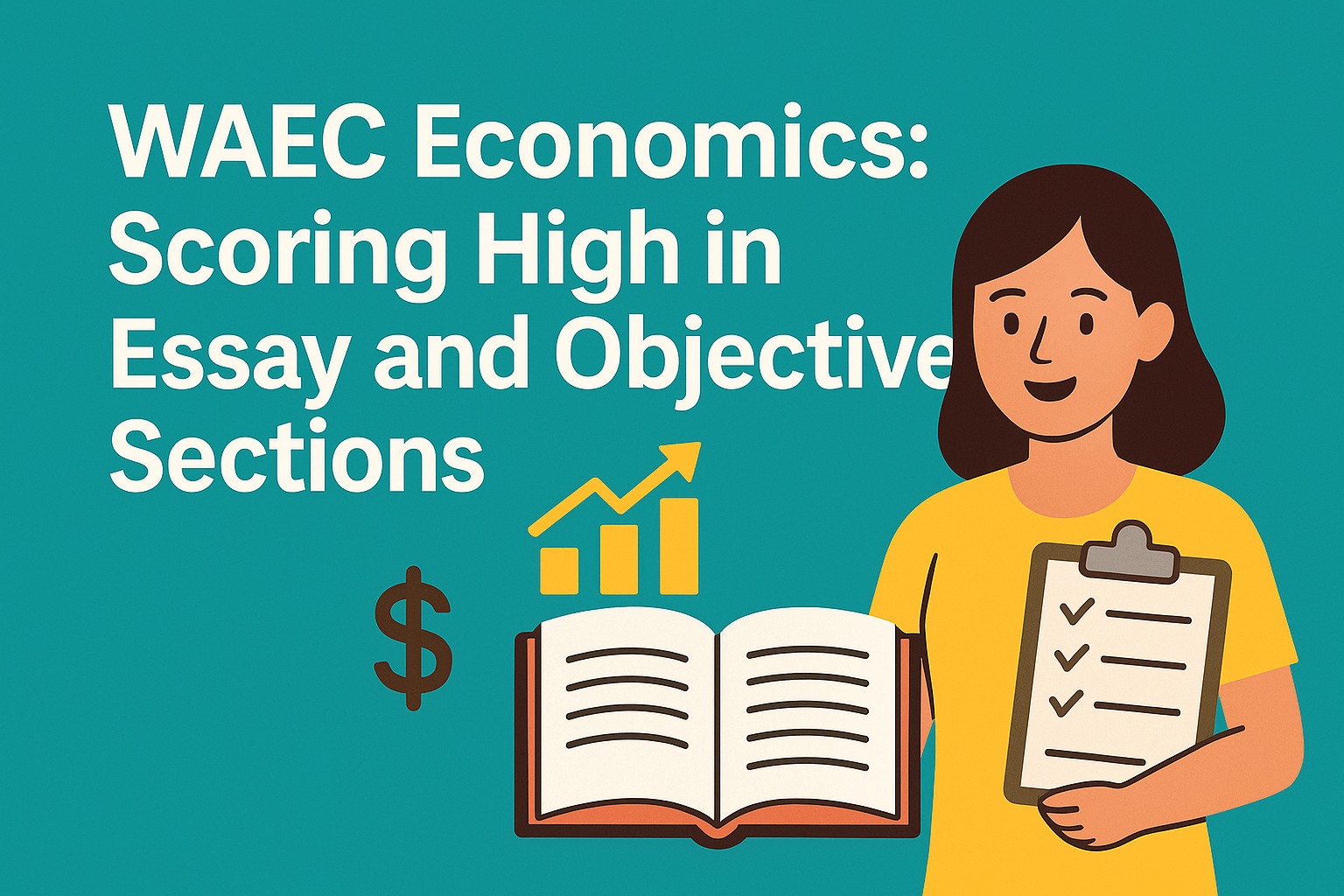1. Introduction
Economics in WAEC evaluates understanding of resource allocation, market structures, and policy impacts. Excelling requires grasping microeconomic and macroeconomic principles, diagrammatic analysis, and essay-writing skills. A high score in Economics underscores analytical ability and is valuable for social-science pathways.
In this guide, we’ll explore the structure of the WAEC Economics paper, dissect objective and essay sections, and share targeted strategies to master diagrams (supply and demand curves), quantitative problems, and structured essay responses.
Equip yourself with clear concepts, time-management techniques, and quality resources to confidently tackle WAEC Economics.
2. Deep Dive: Syllabus & Component Breakdown
2.1 Objective Section (Multiple-Choice)
- Topics: Basic economic terms, demand and supply, elasticity, national income.
- Technique: Elimination method, unit analysis, quick calculations for elasticity.
2.2 Essay Section
- Topics: Market forms (perfect competition, monopoly), fiscal and monetary policy, inflation, unemployment.
- Structure: Introduction (definition + scope), Body (analysis + diagrams), Conclusion (evaluation + recommendation).
2.3 Diagrams and Graphs
- Supply and Demand: Shifts vs movements along curves.
- Cost Curves: Average/total cost, marginal cost intersections.
- National Income: Circular flow model.
3. Exam Strategy Tips
3.1 Multiple-Choice Tactics
- Read questions carefully; note units and keywords.
- Eliminate distractors by checking compatibility with definitions.
3.2 Essay Writing Framework
- Define key terms at the start.
- Use Diagrams: Label axes, curves, shifts.
- Provide Examples: Real-world context (e.g. Nigerian fuel subsidy).
- Evaluate: Pros and cons, short-term vs long-term effects.
3.3 Time Management
- Allocate 1 hour for MCQs, 1 hour for essays.
- Spend 10 minutes planning each essay.
3.4 Diagram Precision
- Use rulers for straight lines; label all parts clearly.
- Use dashed lines for equilibrium prices and quantities.
3.5 Avoiding Common Pitfalls
- Don’t mix up shifts and movements along curves.
- Ensure consistency between text and diagrams.
4. Subject-Specific Overview
4.1 Microeconomics Focus
- Demand determinants: price, taste, income.
- Cost concepts: fixed vs variable costs.
4.2 Macroeconomic Insights
- GDP calculation methods: expenditure, income, output approaches.
- Fiscal policy tools: taxation, government spending.
4.3 Policy Case Studies
- Impact analysis: central bank interest-rate adjustments.
4.4 Current Affairs Integration
- Discuss recent IMF/World Bank reports on Nigeria’s economy.
5. Practice & Resources
5.1 Textbooks
- WAEC Economics Simplified by Literamed Publications
- Frontline WAEC Economics by Frontline Publishers
5.2 Online Platforms
| Resource | Features | Access |
|---|---|---|
| Khan Academy | Micro & macro video lessons | Free |
| Econlib | Plain-language articles and diagrams | Free |
| PastQuestions.ng | WAEC Economics past MCQs and essays | Free |
5.3 Mobile Apps
- Economics Quiz WAEC: MCQ drills.
- MacroMicro: Interactive concept maps.
5.4 Mock Exam Strategy
- Weekly MCQ quizzes; monthly essay submissions for peer review.
6. Conclusion
Achieving high scores in WAEC Economics demands both objective precision and essay depth. By mastering key concepts, refining diagram skills, and practicing structured essays, you’ll navigate the exam with analytical clarity.
Begin by drawing supply and demand curves for a chosen market and drafting a 250-word essay on a recent economic policy. Your journey to WAEC Economics excellence starts today.
